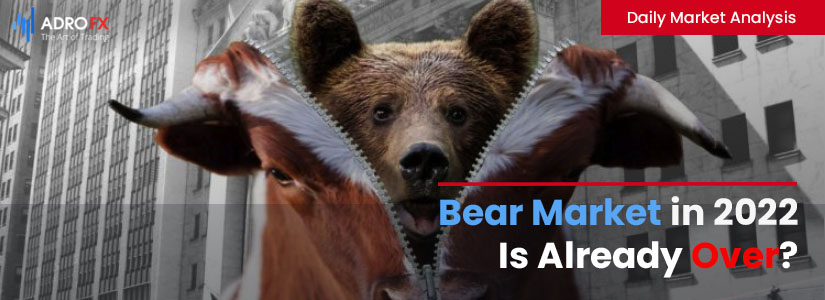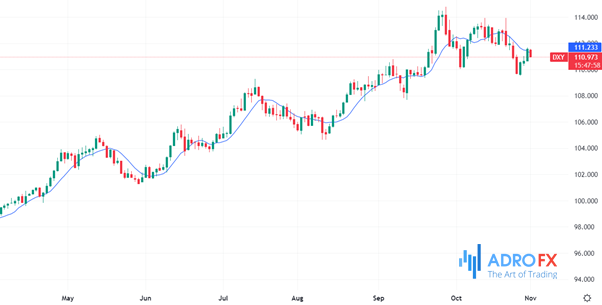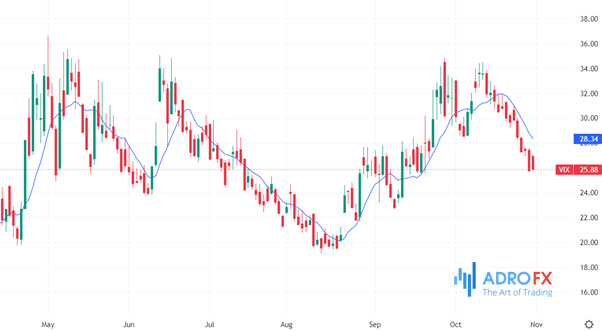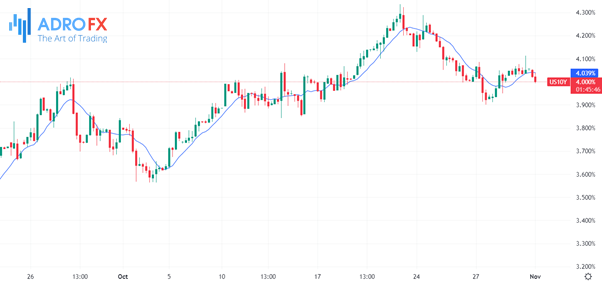What If The 2022 Bear Market Is Already Over? | Daily Market Analysis

Key events:
- UK – Manufacturing PMI (Oct)
- USA – ISM Manufacturing PMI (Oct)
- USA – JOLTs Job Openings (Sep)
- New Zealand – Employment Change (QoQ) (Q3)
Despite the complete absence of any fundamental reasons for the rapid growth, the markets are behaving very positively. The level of negativity in the market sentiment, lately, is so great that it takes just a little bit to accelerate upwards - everyone is hungry for growth.
All key indices demonstrated an uptrend of 4% to 8% last week.

Last week's strong performance was due to the FAANG reports. In the overall standings, despite poor reports from Google (NASDAQ: GOOGL) and Meta (NASDAQ: META), things are looking pretty good.

What is interesting is that on the weekly chart there is a clear uptrend line. Its breakout can mean a serious correction of the USD index and growth of the risky assets, but so far the index keeps above the line.
The volatility index showed a significant decline last week, indicating that what is happening in the market is organic.

Since the beginning of this year, there has been a fairly clear value corridor established for this index. The VIX has now rebounded from the upper boundary at 33 bps and headed towards the lower boundary at 20 bps.
Since the beginning of August, the ten-year yields, as well as the entire far end of the yield curve, have shown their first week of decline.

Of course, this does not mean an abrupt stop and reversal of the yield curve. But on the eve of the Fed meeting, this could be an interesting clue as to the future direction of the market. Although, it could just be that the FAANG reports had such an impact, as these companies have a tremendous impact on the stock market.
This update indicates that the U.S. economy is doing well. GDP is showing growth slightly better than forecasted, after two negative quarters. Durable industrial goods orders are also rising, albeit slightly. The labor market is still strong with jobless claims slightly below expectations and still at a low level. These statistics may not be in favor of lower inflation. And a strong labor market gives the Fed confidence to tighten monetary policy.
There are a lot of interesting statistics waiting for us this week: industrial activity index, trade balance, business activity index in the non-industrial sector, and also the labor market's statistics update - we will see the number of vacancies, number of jobs, and unemployment rate. So far job openings are at a very high level since the pandemic, the number of jobs is in line with their average, and the unemployment rate is record-low.
On Wednesday we are waiting for the next monetary policy meeting of the Fed.
So far, the market participants forecast another triple increase of the key rate by 0,75%. Based on the above-mentioned indicators, it is quite a logical outcome of the meeting. But, as always, we will hear the most interesting things at the press conference afterward.
This week will be very eventful — a lot of updates on the U.S. economy and labor market statistics will show the big picture and Mr. Powell will have us worried sick as usual. The market has been rising all through October, and the reasonable question is how long will it continue to do so.
Well, technically we can identify a reversal of the downtrend by looking at the key indices. And the overall level of negativity is so over the top that it is already hard to believe in a strong decline in the near term.
An interesting addition to the reasons for stopping the bearish trend could be these statistics on historical market declines that go back to 1931, i.e. from the great depression in the USA. So, statistically, the bearish trend in the market lasts an average of 287 days.
In the general offset, we are on the threshold of change of a trend to a bullish one. The basis for this movement has already been laid, the only thing left is to strengthen the positions of the October growth by the breakout of the descending trend lines on the charts of all the key indices of the American market. Short-term trading is still appropriate now since the volatility in the market is quite high. More careful market participants can accurately get the instruments they are interested in, but it is worth waiting for a more confident bid from the bulls. And confirmation of positivity from fundamental indicators would be nice to see.









